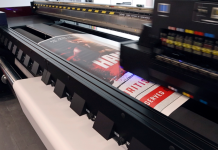Pete Mosley wants to make the business world a more creative place – and we’re totally on board. The author, speaker and advocate of creativity in business shares his thoughts on fostering a creative culture in the workplace.
There’s a reason Google is idolised when it comes to company culture. The tech giant leads the way for creative workplaces – boasting enviable staff perks and championing employee happiness (it even employs a chief happiness officer).
But the bowling alleys, pool tables, and gaming areas aren’t just there for the bragging rights. By creating breakout zones where staff can relax and chat, Google fires up its employees’ creative juices – in turn, upping productivity and bettering itself as a company.
Why is creativity at work so important?
Creativity is what makes each and every one of us different. The same goes for companies – without a creative approach to business and happy, forward-thinking staff, innovation is impossible and you’ll fail to thrive.
The average consumer is much more ‘brand aware’ these days – it tends to be a large part of how people choose where and who they buy from. People want to get to know, like and trust a company before they buy – and it’s the creative storytelling that goes with the product that can help clinch this.
3 ways to foster a creative culture
Coming up with good ideas is a deeply creative thing – but it requires energy and commitment – so the encouragement of the business owner or management team is crucial.
Creating an environment where people have time to think and play with ideas and be supported in doing so is equally important. There are lots of studies that support the value of time to think as opposed to time to work.
Developing a work culture where ideas flow freely, where everyone on the team has a voice, challenges what’s out there and reinvents the game will benefit every company. So how does this happen?
- Listen to your employees
People want to work in a stimulating environment where creativity is valued. They need their creativity acknowledged; encouraged, and their ideas listened to – otherwise they get bored and demotivated and the company suffers in the long run. This doesn’t just go for money-making ideas – ask them what they like about their workplace, from the look of the place to flexible working. Virgin are big advocates of this – some of the ideas implemented within the company originally came from members of staff.
- Allow creative freedom
Think of creativity as a seed that each of us is born with. If it’s watered and nurtured, it grows strong and blooms. If it isn’t, we struggle to do develop it – which is why it’s crucial for companies to allow creatives in the company the freedom and support to do what they are best at. All the best ideas come when people are relaxed and not tied to their computer – so consider creating Google-style breakout areas for employees to escape the office noise, contemplate and let the ideas flow freely.
- Be a creative leader
Leaders that are successful on their own terms have a pattern in which they work and common things that they do. If you want to inject creativity into the workplace, the enthusiasm for this needs to come from the top. Business owners and management teams need to be ready and willing to bring fresh ideas to the table – or employ and support the creative specialists that can bring this into the company mix.
Put simply, creativity and profit are interlinked. People expect companies to be creative and innovative – and if you’re not fostering a creative culture with happy and productive employees, you’re going to get left behind.




